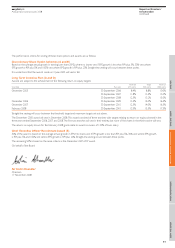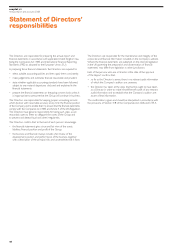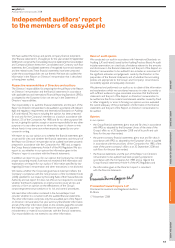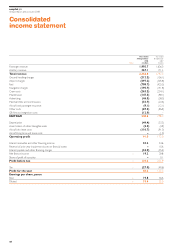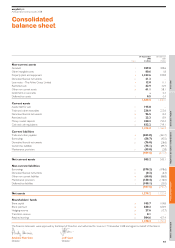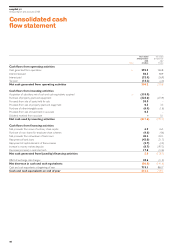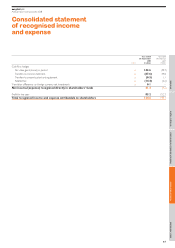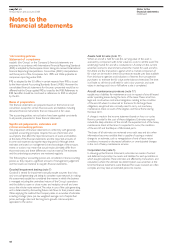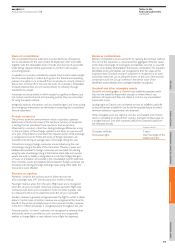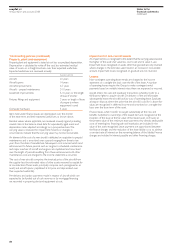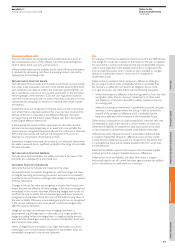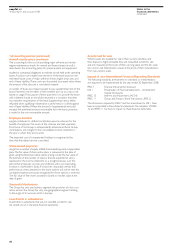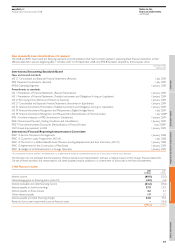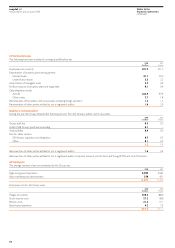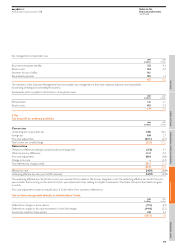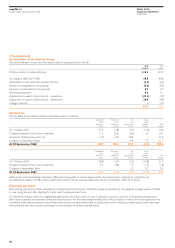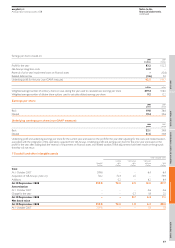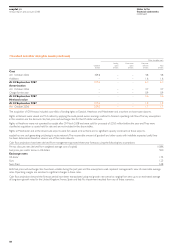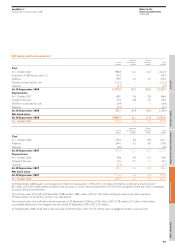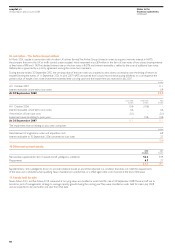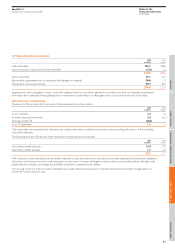EasyJet 2008 Annual Report Download - page 53
Download and view the complete annual report
Please find page 53 of the 2008 EasyJet annual report below. You can navigate through the pages in the report by either clicking on the pages listed below, or by using the keyword search tool below to find specific information within the annual report.
easyJet plc
Annual report and accounts 2008
Notes to the
financial statements
continued
Financial instruments
Financial instruments are recognised when easyJet becomes a party to
the contractual provisions of the relevant instrument and derecognised
when it ceases to be a party to such provisions.
Where market values are not available, the fair value of financial instruments
is calculated by discounting cash flows at prevailing interest rates and by
applying year end exchange rates.
Non-derivative financial assets
Non-derivative financial assets are recorded at amortised cost and include
loan notes, trade receivables, cash and money market deposits. Restricted
cash comprises cash deposits which have restrictions governing their use
and is classified as a current or non-current asset based on the estimated
remaining length of the restriction. Cash and cash equivalents comprise
cash held in bank accounts with no access restrictions and bank or money
market deposits repayable on demand or maturing within three months
of inception.
Impairment losses are recognised on financial assets carried at amortised
cost where there is objective evidence that a loss has been incurred. The
amount of the loss is measured as the difference between the asset’s
carrying amount and the present value of future cash flows, discounted
at the original effective interest rate.
If, subsequently, the amount of the impairment loss decreases, and the
decrease can be related objectively to an event that occurred after the
impairment was recognised, the appropriate portion of the loss is reversed.
Both impairment losses and reversals are recognised in the income
statement as components of net finance income.
Investments in equity instruments are carried at cost where fair value cannot
be reliably measured due to significant variability in the range of reasonable
fair value estimates.
Non-derivative financial liabilities
Non-derivative financial liabilities are initially recorded at fair value of net
proceeds, and subsequently at amortised cost.
Derivative financial instruments
Derivative financial instruments are measured at fair value.
Derivative financial instruments designated as cash flow hedges are used
to mitigate operating and investing transaction exposures to movements
in jet fuel prices and currency exchange rates. Hedge accounting is applied
to these instruments.
Changes in intrinsic fair value are recognised in shareholders’ funds to the
extent that they are effective. All other changes in fair value are recognised
immediately in the income statement. Where the hedged item results in a
non-financial asset or liability the accumulated gains and losses previously
recognised in shareholders’ funds form part of the initial carrying value of
the asset or liability. Otherwise accumulated gains and losses are recognised
in the income statement in the same period in which the hedged items
affect the income statement.
Hedge accounting is discontinued when a hedging instrument is
derecognised (e.g. through expiry or disposal), or no longer qualifies for
hedge accounting. Where the hedged item is a highly probable forecast
transaction, the related gains and losses remain in shareholders’ funds until
the transaction takes place.
When a hedged future transaction is no longer expected to occur, any
related gains and losses previously recognised in shareholders’ funds are
immediately recognised in the income statement.
Tax
Tax expense in the income statement consists of current and deferred tax.
The charge for current tax is based on the results for the year as adjusted
for income that is exempt and expenses that are not deductible using tax
rates that are applicable to the taxable income. Tax is recognised in the
income statement except when it relates to items credited or charged
directly to shareholders’ funds, in which case it is recognised in
shareholders’ funds.
Deferred tax is provided in full on temporary differences relating to
the carrying amount of assets and liabilities where it is probable that
the recovery or settlement will result in an obligation to pay more,
or a right to pay less, tax in the future with the following exceptions:
• where the temporary difference arises from goodwill or from the initial
recognition (other than in a business combination) of other assets
and liabilities in a transaction that affects neither taxable income nor
accounting profit.
• deferred tax arising on investments in subsidiaries, associates and joint
ventures, is not recognised where the Group is able to control the
reversal of the temporary difference and it is probable that the
temporary difference will not reverse in the foreseeable future.
Deferred tax is measured on an undiscounted basis at the tax rates that
are expected to apply in the periods in which recovery of assets and
settlement of liabilities are expected to take place, based on tax rates
or laws enacted or substantively enacted at the balance sheet date.
Deferred tax assets represent amounts recoverable in future periods
in respect of deductible temporary differences, losses and tax credits
carried forwards. Deferred tax assets are recognised to the extent that
it is probable that there will be suitable taxable profits from which they
can be deducted.
Deferred tax liabilities represent the amount of income taxes payable
in future periods in respect of taxable temporary differences.
Deferred tax assets and liabilities are offset when there is a legally
enforceable right to set off current tax assets against current tax liabilities
and it is the intention to settle these on a net basis.
51
OverviewDirectors’ reportReport on Directors’ remunerationFinancial informationOther information


